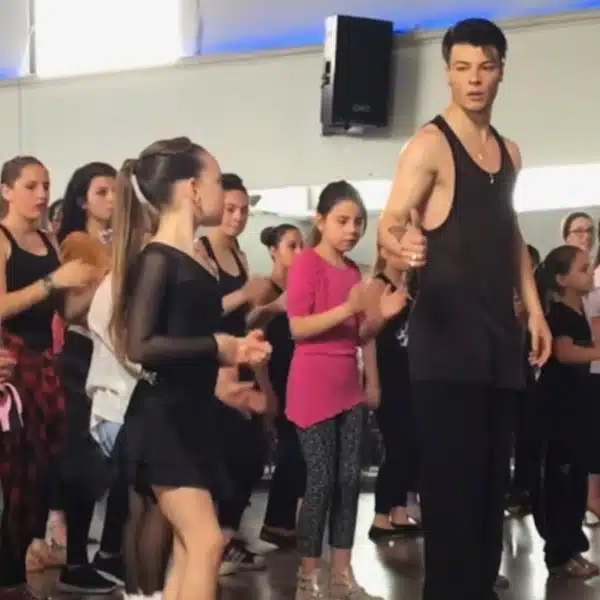Perhaps the most famous ballet in popular culture is, arguably, The Nutcracker. Many families arrive at local community centers in droves to watch their children perform in delightful amateur productions of it during the holidays. And if you can't make it to a live performance, there are numerous filmed productions you can find online and on television. Among these is an Emmy Award-Nominated film of the American Ballet Theater's 1977 production starring the famous ballet dancer Mikhail Baryshnikov. This spectacular artifact of 1970s styling and filmmaking gives any novice ballet dancer a great starting point for exploring the former Soviet premiere ballet dancer's career.
A Legendary Dancer Is Born
Mikhail “Misha” Baryshnikov was born on January 28, 1948 in Riga, Latvia, which at the time was a part of the Soviet Union (USSR). He began training in classical ballet at a young age, and soon found himself learning from the masters at the Vaganova Ballet School. Once he graduated from this iconic dance program, he was hired as a principal ballet dancer for the Kirov Ballet in Leningrad, Russia. The company toured the Soviet Union, and ventured out of the communist bloc into Western theaters around the world. Already acclaimed for his precise technique, Baryshnikov began to plan to defect from the Soviet Union by the early 1970s. The time came during the final performances of the Kirov Ballet Company’s Canadian tour in 1974.
The Principal Ballet Dancer Defects
“When I was in Toronto, I finally decided that if I let the opportunity of expanding my art in the West slip by, it would haunt me always,” confided the dancer in a post-defection interview. Unfortunately, defection from the USSR was considered a crime by the Soviet government and, if caught, a potential defector and his family could reap serious, sometimes deadly, repercussions. Baryshnikov details the escape from KGB handlers in an interview with People magazine.
“It was arranged secretly through friends. I was running, the getaway car was waiting a few blocks away as we were boarding on the group’s bus. KGB was watching us. It was actually funny. Fans are waiting for me outside the stage door, and I walk out and I start to run, and they start to run after me for autograph. They were laughing, I was running for my life. It was very emotional moment, I tell you.”
No matter how terrifying the escape was, the potential to collaborate with the West’s top choreographers and dance companies was too appealing. Thankfully, the Soviet dancer was granted asylum by the Canadian government not long after his escape and he soon traveled to the United States, joining the American Ballet Theater in 1974 and then the New York City Ballet in 1978.
Baryshnikov Leaps Into American Hearts
By 1980, Mikhail Baryshnikov had starred in a major motion picture—The Turning Point (1977)—and was nominated for an Academy Award and Golden Globe for his performance, had performed several incredible seasons with some of the top dance companies in the United States, and become artistic director of the American Ballet Theater. At the time, he was being heralded as the most famous ballet dancer in the world, and his lack of ego continued to endear the American public to him. Ultimately, the former Soviet ballet dancer was most at home embroiled in the arts and knew his contributions would not end with his ballet performances.
He continued to showcase his acting and dancing talents in films like White Nights (1985), where he collaborated with iconic tap dancer Gregory Hines, and That’s Dancing! (1985), which was choreographed by the famed Twyla Tharp. Returning to the stage in a different way, he performed in an adaptation of Metamorphosis in 1989 and was nominated for a Tony Award. Not yet slowing his momentum, he started the White Oak Dance Project in 1990, which sought to expand the field of American modern dance, and the Baryshnikov Arts Center in 2005, which continues to aim to integrate a wide swath of artistic disciplines under one roof.
The Renaissance Man's Legacy
Despite his long and successful dance history, Sex & the City fans might know Baryshnikov best for his portrayal as Carrie Bradshaw’s Russian lover in the final season of the series. This association doesn’t disappoint the Renaissance man in the slightest, for at his core he feels proud to know the world enjoys him at his best—when he is performing. And according to an interview with Vanity Fair, the 72-year-old seems to have no plans of retiring anytime soon. “I mean life is still ahead of me, hopefully,” he says. “You don’t know how long it will last. That is why I use it to full capacity. Looking back at it, there is a lot of depressing stuff, a lot of tragic stuff, a lot of truly funny stuff. That mix is what life is about.”
Related Links:
Charming Photos of Playful Pups Taking Center Stage with Professional Ballet Dancers
Interview: Filmmaker Slows Time to Capture Stunning Movements of Ballet Dancers
Heartbreaking Photos of Ballet Dancers in Puerto Rico’s Abandoned Spaces
New York City Ballet X Shantell Martin Bringing Contemporary Art to Lincoln Center






















































































